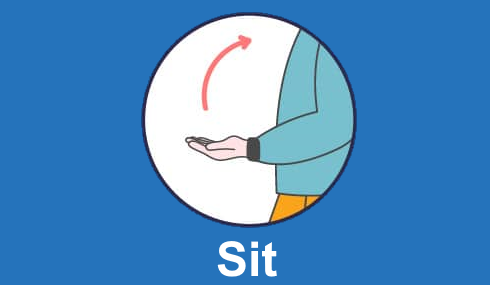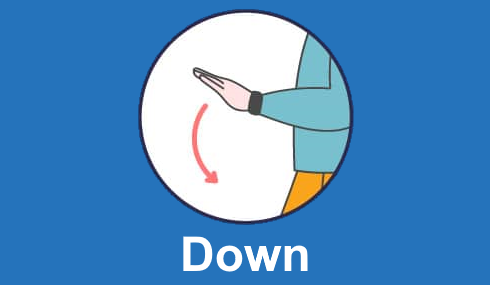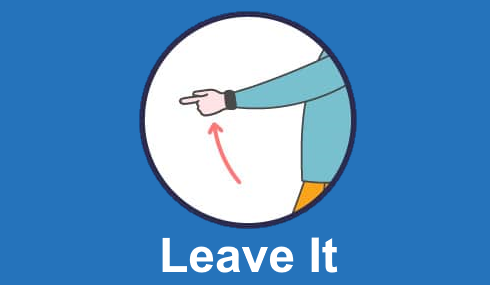Say It Without a Sound: The Power of Hand Signals in Dog Training
Published on: 4/4/2025

Beyond Barking and Banter: Communicating with Hand Signals
We talk to our dogs so much, don’t we? We give them clues, talk about the day (I admit, I'm guilty!), and shower them with lots of verbal praise. But what if your voice is obscured in a crowded park here in İstanbul, or your dog is well out of earshot? What about when our cherished companions are elderly, and their hearing begins to decline? “The silent language comes in the way of hand signals. When I first started training, I paid a lot of attention to the verbal cues, but I soon discovered that I wasn’t using a massively effective channel for communication. Hand signals should not only become your new party trick; this also clarifies your execution, channels your attention, and very often helps further strengthen the partnership between you and your dog, further bolstering your dog training basics!
Why Bother with Hand Signals? The Benefits Speak Volumes!
There are a surprising number of benefits for you and your dog to add visual cues to your training bag of tricks:
Enhanced Clarity
Visual signals can pierce through noise and distance when verbal cues might not. They provide a clear, unambiguous message.
Increased Focus
Using hand signals, prompt your dog to focus their gaze upon you more so, and respond accordingly, optimising their training stimulus.
Accessibility
Essential for communicating with deaf or hard-of-hearing dogs, and massively helpful for senior dogs whose hearing may be in decline.
Versatility & Silence
Ideal for places that need silence (a sleeping baby in the house, during certain activities) or when verbal prompts aren't appropriate.
Stronger Bond
A layer from the side of your communication can help you know and understand each other better and can build up your relationship even stronger.
Dog Sports Advantage
As we include alternative options to the standard formats, many canine sports such as obedience, rally, agility, and freestyle use hand signals, so they are an essential or highly-useful addition.
How to Teach Hand Signals: Pairing is Key
Teaching hand signals is not difficult, it simply involves associating a new visual cue with an associated verbal cue that your dog already knows. Here’s the basic process:
Choose a Clear Signal
Choose a unique hand signal for the command (we’ll go over common ones below). Keep it simple enough that you can do it every time and your dog can see it.
Pair Signal and Verbal Cue
Get your dog's attention. Make it a point to deliver the hand signal just prior to or simultaneously with the verbal cue you already use (e.g., show the ‘down’ signal while you give the verbal command “Down”).
Mark and Reward
Mark the moment (using a clicker or saying “Yes!”) as soon as your dog performs the behavior. and then promptly reward them with a high-value treat.
Repeat Consistently
Practice this pairing in short, positive sessions — here are some general training session tips to get the most bang for your buck. Your dog needs to learn the association and consistency is key. Try to limit the length of sessions to prevent overtraining.
Fade the Verbal Cue (Gradually!)
When your dog appears to understand the pairing, begin to occasionally test the hand signal by itself. Call the signal, pause a second or two, check their response. If they do, big reward! If not, just give the verbal cue to assist them and attempt again later. You can also begin to whisper the verbal cue.
Practice in Different Contexts
Once the signal is stable in a low-distraction space, practice in slightly louder environments.

Common Hand Signals to Get You Started
Although you can create your own signals, you might want to use common ones, particularly if there is a chance your dog will interact with others, or if you intend to compete in dog sports. Make sure your selected signals aren’t too similar! Some usual suspects are basic commands:

Sit Signal
Usually a palm or index finger dragging upwards away from the top of the dog’s nose towards the back of their head.

Down Signal
Usually a flat palm(caster down) or index finger straight down towards the floor. Ensure distinct from 'Sit'!

Stay Signal
The traditional “stop” sign: flat open palm toward your dog and held still for a moment.

Come / Recall Signal
Usually a broad, sweeping movement of the arms toward your body, or some sort of slapping motion on your thigh. Make it look inviting!

Leave It Signal
More does: Can point away, point finger, or wag finger. Choose one and be consistent.
Tips for Hand Signal Success
Keep Signals Clear & Distinct: No small, hard to read movements. Want your 'Sit' not to look like your 'Down'?
Be Consistent: Use that exact same signal, every single time. Make sure the whole family uses the same signals too.
Start Quiet: When teaching, start in a less distracting environment where your dog will be focused.
Stay Positive: Give good rewards and be positive so the association is positive. Even without the words — your own body language and expression continues to count! (Like the expression equivalent of your tone of voice).
Fade Verbal Slowly: Take your time to get rid of the verbal cue. Make sure that the dog has fully understood the hand signal first.
Consider Your Dog's Perspective: Try getting down on their level from time to time. Are they able to see your signal clearly based on their location?
Use the Right Tools: Good rewards and possible reinforcement tools — for example, like a treat pouch make marking and rewarding close intervals infinitely easier (useful for marking when using chi for dog training).

Troubleshooting Common Hiccups
What happens if your dog just stares blankly at your waving hands? Don't worry! Go back a step. Get the verbal cue really solid first. Make your sign bigger or clearer (first). Make sure your rewards are sufficiently motivating. Are you accidentally communicating other body language signals that contradict you? We may lean forward or make eye contact and send the wrong signal. And remember to keep sessions short and establish achievable training goals – such as splitting up the signal learning even further.
Clear communication with hand signals taps into your dog's visual learning! Mastering this, like all positive training, benefits from understanding effective cueing and how to keep your dog mentally engaged. If you want structured, step-by-step guidance on these positive, brain-boosting methods, a dedicated program can be invaluable. A resource I often recommend for this structured approach is the Dog Brain Training Program, which focuses specifically on positive techniques and mental engagement. You can explore the Dog Brain Training Program and its techniques here to see how it helps build that strong foundation using clear communication (visual or verbal!).
Final Thoughts: Let Your Hands Do (Some of) the Talking!
Introducing hand-signals to your dog training toolbox is a great way to strengthen communication, increase reliability and prepare for the unexpected. It evolves a new realm of communication between you and your furry friend. While pairing signals – with verbal cues and visual cues – clearly, practicing consistently and keeping it positive, you can train your dog to respond beautifully to both verbal and visual signals. Try it — you might be surprised by how quickly your dog learns the unspoken language!
Pair it Up!
In teaching, use the hand signal just before or at the same time as the known verbal cue. Mark and reward success.
Clear & Consistent Wins:
Make your signals different from each other and do them exactly the same way each time for clarity.


